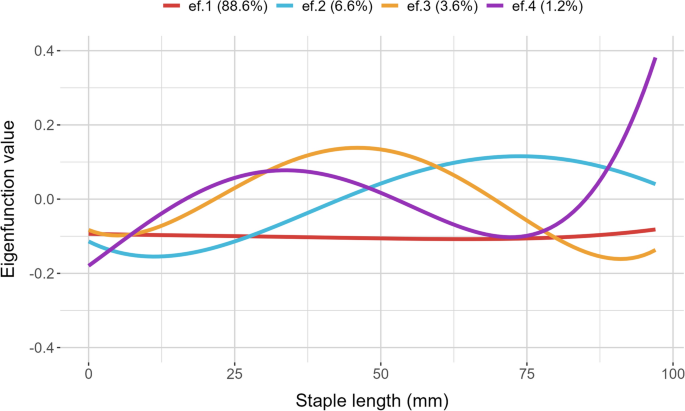Benefits of Using an Optical Fibre Diameter Analyser in Fiber Optics
Benefits of Using an Optical Fibre Diameter Analyser in Fiber Optics
Blog Article
Maximize Your Fibre Optic Efficiency: Understanding Optical Fiber Size Analyser Technology
The efficiency of fibre optic systems is critically affected by the accuracy of their size, a factor commonly neglected in the search of optimum signal honesty. Recognizing the modern technology behind optical fiber size analysers discloses the detailed balance in between measurement accuracy and production high quality. These gadgets not only boost conformity with industry criteria however additionally give real-time insights that can preemptively deal with potential issues. The implications of their use expand beyond simple measurement; they can essentially alter the landscape of fiber optic efficiency. What elements should one think about to harness their full capacity?
Relevance of Optical Fibre Diameter
The diameter of optical fibre plays an essential function in identifying the performance and efficiency of interaction systems. It affects a number of vital specifications, including the mode of light proliferation, depletion, and data transfer capability. Bigger sizes commonly enable for numerous light modes, promoting higher information transmission prices. On the other hand, smaller diameters often tend to support less modes, which can boost signal clearness and reduce crosstalk.

In addition, recognizing the diameter's ramifications can bring about cost financial savings by decreasing the requirement for signal boosting and repeaters in substantial networks (optical fibre diameter analyser). Finally, the relevance of optical fibre diameter can not be overstated, as it directly influences the total performance and integrity of modern-day communication systems

How Diameter Affects Signal Quality
Signal top quality in optical fibre systems hinges considerably on the diameter of the fibre. A smaller size can lead to greater depletion rates, resulting in signal loss as light journeys via the fiber.
Alternatively, bigger diameters typically allow for enhanced light capture and decreased modal diffusion, enhancing signal clarity. In multimode fibres, a larger core diameter can sustain multiple light modes, however it may also present intermodal diffusion, which can break down signal high quality. Therefore, selecting the optimal fiber diameter is important for achieving the desired efficiency in details applications.
Moreover, the communication in between the fibre size and the wavelength of the light made use of plays a critical role in determining the efficient transmission distance and general signal stability. Understanding exactly how fibre size affects signal top quality is necessary for network developers and engineers striving to enhance optical fibre systems for trustworthy, high-speed data transmission.
Review of Size Analyser Innovation
In numerous optical fibre production processes, exact dimension of fibre diameter is essential for making sure consistent performance and high quality (optical fibre diameter analyser). Size analysers are advanced instruments created to examine the physical measurements of optical fibres with high accuracy. They use advanced optical and laser innovations to measure the size, ovality, and concentricity of the fiber, therefore giving crucial information for high quality control
These analysers can run in-line throughout the manufacturing process or as component of off-line testing methods. In-line systems allow real-time monitoring, enabling makers to adjust specifications promptly, thus keeping optimal manufacturing conditions. Off-line analysers, on the other hand, give detailed evaluations of batches, making sure that any type of deviations from specified tolerances are identified and attended to.
Size analysers substantially add Learn More Here to the reduction of flaws in optical fibers, enhancing general product integrity. By continually determining crucial criteria, these modern technologies promote compliance with industry requirements and specs. As the need for high-performance optical fibres remains to increase, the function of size analysers comes to be significantly vital in attaining the desired high quality and performance standards in fiber optic systems.
Key Attributes of Fiber Size Analysers
Although various versions of fiber diameter analysers exist, they frequently share a number of essential attributes that enhance their capability and integrity. One of the most considerable attributes is high-resolution measurement capabilities, which make certain exact size analyses, critical for keeping high quality control in fibre manufacturing. In addition, numerous analysers integrate innovative optical sensing units designed to detect minute variations in fiber diameter, hence giving important data for process optimization.
Another essential attribute is real-time monitoring, allowing operators to receive instant responses on fibre size throughout the manufacturing procedure (optical fibre diameter analyser). This capability promotes rapid modifications and decreases the possibility of problems. Lots of analysers also come geared up with easy to use interfaces, allowing drivers to conveniently browse via settings and data outcomes
Moreover, robust data storage space and evaluation functionalities are vital for tracking historic efficiency fads and guaranteeing conformity with market standards. These functions jointly contribute to the effectiveness of fiber diameter analysers in optimizing fibre optic efficiency.
Best Practices for Fibre Optimization

First, routine calibration of optical fiber diameter analysers is essential. This ensures exact dimensions and reduces prospective inconsistencies that could affect efficiency. Next, keeping a clean working environment is important; dirt and impurities can bring about signify degradation.
In addition, it is essential to select fibres that fulfill certain application requirements. This involves examining aspects such as depletion, transmission capacity, and ecological problems. Correct installation methods should additionally be followed, including staying clear of sharp bends and too much stress, which can compromise fiber honesty.
Furthermore, utilizing innovative tracking systems can help with real-time efficiency analyses, enabling timely recognition of issues. Regular screening and upkeep need to be performed to ensure that fibers remain within ideal operational parameters.
Finally, training employees on the newest fiber optimization technologies and methodologies will certainly enhance their capability to carry out efficient approaches. By complying with these best practices, companies can considerably boost the performance and life expectancy of their optical fiber systems, making sure effective communication and information transfer.
Verdict
In verdict, the assimilation of optical fiber size analyser technology is crucial for maximizing fibre optic efficiency. By making sure precise dimensions of fiber measurements, these analysers significantly enhance signal high quality and reduce losses throughout data transmission.
Signal quality in optical fibre systems pivots substantially on the size of the fibre.In many optical fibre production procedures, precise measurement of fibre diameter is necessary for making certain constant efficiency and quality. As the demand for high-performance optical fibres continues to rise, the function of diameter analysers becomes significantly crucial in accomplishing the desired quality and performance requirements in helpful hints fiber optic systems.
These attributes collectively add to the efficiency of fiber size analysers in maximizing fiber optic performance.
In verdict, the combination of optical fibre diameter analyser innovation is crucial for maximizing useful link fibre optic efficiency.
Report this page